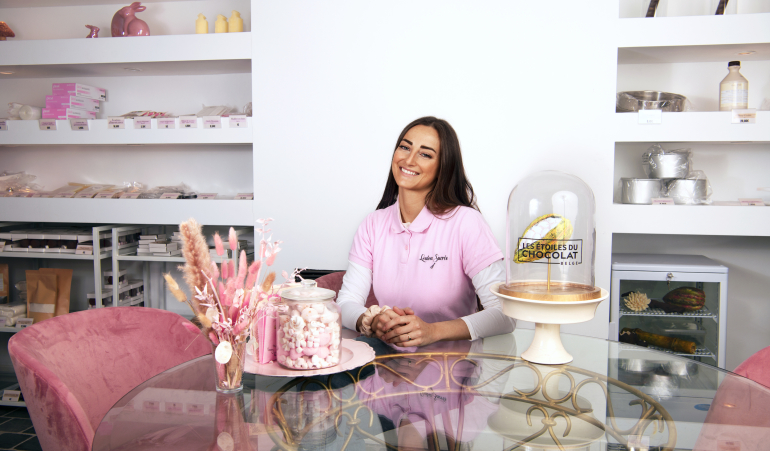
At the age of 28, Louise Henriquès is at the beginning of her career as a pastry-chocolate chef, but she's already making a name for herself. After winning the TV competition “Les Etoiles du Chocolat Belge” at the end of 2024, she was present at Expo 2025 in Osaka for the Walloon week and for a demonstration of chocolate praline creation.
Belgium is known the world over for its chocolate. So it was only natural to find a day dedicated to the art of chocolate in Wallonia on the occasion of Walloon Week at the Belgian Pavilion at Expo 2025 in Osaka.
Wallonia, a land of traditions and flavors, is also a paradise for chocolate lovers. Here, artisan chocolatiers perpetuate exceptional know-how, transforming cocoa beans into veritable gourmet works of art. In the Belgian pavilion in Osaka, chocolatier Tarquin Fontaine and Louise Henriquès, winner of the Etoiles du Chocolat Belge competition in 2024, offered the Japanese public a unique demonstration of praline creation.
Before setting off for Japan, we met up with Louise Henriquès. She has always had a passion for pastry-making. “I've always loved everything to do with delicacies in the broadest sense of the word. As early as secondary school, I knew I wanted to become a baker. I went on to do a seventh year specializing in chocolaterie, confiserie and glacerie. I then went abroad where I worked in the restaurant business before returning to Belgium where I worked in a bakery-pastry shop. Alongside this, I developed my side business creating cakes for events. During the Covid period, I realized that I liked to pass on my knowledge. So I started teaching,” explains Louise Henriquès, who is known on social networks under the name Loulou Sucrée.
“At the same time, my side business began to take up more and more space. So I decided to set up my own business. At the same time, I was invited to take part in the TV competition 'Les étoiles du chocolat belge',” continues Louise Henriquès. “Les étoiles du chocolat belge” features artisan chocolatiers from all over the country, up against an exceptional panel of judges: Pierre Marcolini, the world pastry champion, multi-medal-winning Belgian chocolate ambassador Jean Philippe Darcis and chocologist Victoire Finaz. The aim is to elect the best chocolatier in Belgium. And this year, the winner was selected to represent Belgium at Expo 2025 in Osaka.
Sugar-free, lactose-free and gluten-free chocolate
“Before the competition, I didn't offer many chocolate products. The competition took me out of my comfort zone and made me want to get into chocolate. I wanted to pass on the values of health and well-being around chocolate, since this product has so many benefits. I really enjoy passing on something. That's why it's so nice to be able to go to Expo Universelle to show and pass on Belgian know-how,” explains Louise Henriquès, who has launched a range of refined sugar-free, lactose-free and gluten-free chocolates.
The pastry chef explains her choice. “I like to be able to indulge myself by tasting my creations. It's quite frustrating to think that you have to be careful. I don't have any specific intolerance, but for my own well-being, I pay attention to the quality of the ingredients and the way my body assimilates them. And I realize that things go much better when they are healthier, more natural ingredients. It's a personal process at first, but then I realized that a lot of people had the same thoughts and were also concerned by it.”
To achieve this, Louise Henriquès carried out numerous tests. “I didn't get my recipes right the first time. In fact, I'm still in the process of testing the milk and white chocolate ranges,” she explains.
Thanks to her participation in Expo 2025 in Osaka, Louise Henriquès hopes to make a name for herself on the international scene, and open new doors for herself as she continues to evolve in the world of chocolate.
Isabelle Anneet (AWEX)